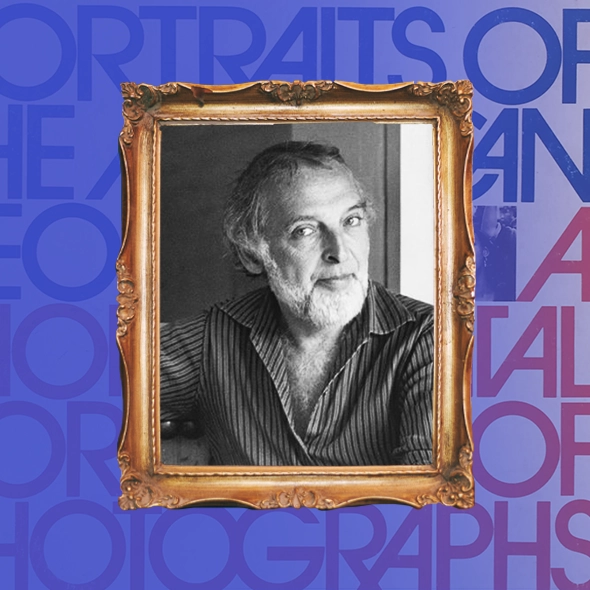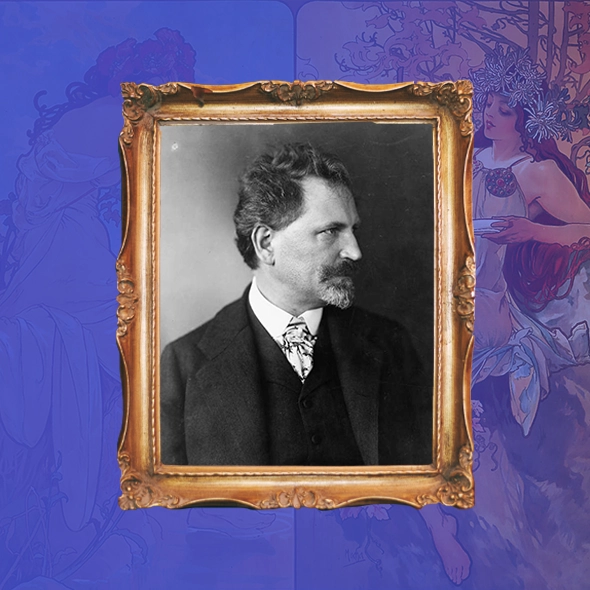Shigeo Fukuda: Graphic Designers You Should Know About
Shigeo Fukuda, the Japanese designer known for optical illusions, playful visual wit, and powerful social commentary. Explore his posters, shadow sculptures, and global influence on minimalist and conceptual design

Shigeo Fukuda (1932–2009) made design a game of wit and wonder. He became known for optical illusions, sharp social commentary, and minimalist precision. His posters, magazine columns, and shadow sculptures challenged perception while sparking delight. Fukuda showed that serious ideas could be delivered with humor and elegance, transforming visual problem-solving into visual play.
Fast Facts
Date of Birth
February 4, 1932
Place of Birth
Tokyo, Japan
Education
Tokyo National University of Fine Arts and Musi
Known For
Optical illusion posters, environmental and anti-war graphics, sculptural illusions
Big Break
1967 IBM Gallery exhibition in New York, curated by Paul Rand
Design Philosophy
Playful visual wit combined with sharp social commentary; design as a joyful rebellion against the obvious
Style Keywords
Minimalism, illusion, satire, visual pun, conceptual clarity
Era
Post-war Modernism, late 20th century
Affiliations
Japan Advertising Artists Club, Idea Magazine contributor, Asahi Shimbun newspaper contributor, New York Art Directors Club Hall of Fame
Died
January 11, 2009 – Tokyo, Japan
Origins
Shigeo Fukuda was born into a family of toy manufacturers in Tokyo. From an early age, he was immersed in an environment where play and creativity were daily realities. This upbringing among toys fostered an early fascination with visual games and interactive art, elements that would come to define his design language.
Growing up in post-war Japan, he later entered a design culture that valued posters as tools of communication and social advocacy rather than mere advertising. This ethos, shaped by designers like Takashi Kono who sought to merge Eastern aesthetics with Western modernism, gave Fukuda a belief in design’s power to address global issues.

First Steps
Fukuda enrolled at Tokyo National University of Fine Arts and Music, where he studied graphic design and began exploring ways to combine humor with sharp visual intelligence. Even before graduating in 1956, his work stood out for its imaginative and witty approach, earning an award from the Japan Advertising Artists Club.
During his studies, he was particularly drawn to the clean, functional clarity of Swiss design and Scandinavian modernism. In 1955, as a student, Fukuda encountered the work of Paul Rand at the Graphic ’55 exhibition in Tokyo, an experience so profound that he returned ten times in a single week to study the pieces.

Special Story
When Paul Rand Curated Shigeo Fukuda
In 1967, something happened that would change Fukuda’s career forever. American graphic design legend Paul Rand, whose work Fukuda had admired since first seeing it at Graphic ’55 in 1955, came across one of Fukuda’s designs in Japanese Graphic Design Magazine. Rand was intrigued. Impressed. And, in true Rand fashion, he did not just send a compliment; he decided to act.
He invited Fukuda to New York and curated a major exhibition for him at the IBM Gallery. The show was called Toys & Things: The Work of Shigeo Fukuda, and it was more than just posters on the walls. There were also whimsical wooden toys Fukuda had built for his young daughter Miran, including puzzles, small contraptions, and pieces of joy you could hold in your hands.
Fukuda later called this debut in America the highlight of his career. Rand’s recognition was more than praise. It was an open door between Eastern and Western design worlds during a time when those bridges were rare.
The exhibition revealed Fukuda’s uncanny ability to combine minimalism with optical illusion, humor, and sharp social commentary. The audience loved it. Critics loved it. And before long, this one show would ripple outward, leading to international acclaim and, in 1975, the Grand Prix at the Warsaw Poster Biennale.
Fukuda described the 'Toys & Things: The Work of Shigeo Fukuda' exhibition in New York as the highlight of his career.
Later Years
Fukuda’s mastery of visual clarity and inventive imagery became especially evident in his designs for the 1970 World Expo in Osaka, where he created the event’s visual identity. These works also showcased his skillful use of photographic collage techniques, combined with precision, minimalism, and optical illusion.
Fukuda continued to balance commercial and conceptual work, designing campaigns for National and Panasonic and redesigning the SEU department store identity in Tokyo in 1976.
After winning the Grand Prix at the 1975 Warsaw Poster Biennale, his international profile grew steadily. He was invited to lecture and exhibit around the world, from Europe to North America, sharing his philosophy of design as a fusion of clarity and surprise.
In the 1980s, he created a series of posters for the United Nations addressing environmental concerns, refining his ability to deliver urgent messages with the lightest visual touch.
In 1987, he became the first Japanese designer inducted into the Art Directors Club Hall of Fame in New York, cementing his status on the global stage.
Alongside his studio work, he taught at Tokyo National University of Fine Arts and Music from 1973 to 2002. Between 1982 and 1984, he served as a visiting professor at Yale University, sharing his expertise with an international generation of designers. He later took on leadership roles as Vice President of ICOGRADA (1993–1995) and Director of the Japan Graphic Designers Association (2000–2009), championing Japanese design on the global stage. His work is also permanently installed at the Ninohe Civic Center in Iwate Prefecture, a testament to his enduring influence in Japan.
From the mid-1980s onward, he expanded his illusions into three-dimensional form. His celebrated “Lunch with a Helmet On” and other shadow sculptures transformed welded scrap into precise silhouettes when lit at the right angle, a masterclass in perception and transformation.
He even incorporated playful illusions into his own home, including a false red door that appeared to be the main entrance from a distance, while the real door was hidden in the wall, and a backyard adorned with a giant fried-egg sculpture.
Fukuda worked prolifically into the 2000s, proving that curiosity and playfulness could sustain a lifetime of creative momentum.
Watch our video on Shigeo Fukuda here:
Style & Philosophy
Fukuda’s work was more than visual trickery; it was a joyful rebellion against the obvious. Rooted in his childhood surrounded by toys and shaped by his sharp intellect, his designs blended humor, satire, and social critique with masterful minimalism. He believed design should delight and provoke, not just decorate.
His posters often addressed urgent issues such as environmentalism and anti-war sentiment, using clean, conceptual imagery that communicated complex ideas at a glance. As he put it, the right mix was “30% dignity, 20% beauty, and 50% absurdity.”
Beyond his design work, Fukuda was prolific in publishing and in organizing other designers, reinforcing his vision that graphic design could educate, challenge, and inspire communities of creatives.
"I believe that in design, 30% dignity, 20% beauty, and 50% absurdity are necessary."
— Shigeo Fukuda on his design philosophy
Defining Designs
The following works represent key moments in Shigeo Fukuda’s design career. These creations shaped his voice and redefined how minimalism, humor, and social commentary coexist.
Defining Designs
The following works represent key moments in Shigeo Fukuda’s design career. These creations shaped his voice and redefined how minimalism, humor, and social commentary coexist.
Visual Circus Series (1960s–1980s)
Recurring visual puzzles published in Idea magazine, inviting readers into playful, intellectual engagement with design.
Where is the Dragon? (1960s–1980s)
A popular visual puzzle column for Asahi Shimbun newspaper, showcasing Fukuda’s signature wit and love of visual games.
Victory 1945 (1975)
A bullet transforming into a fountain pen, distilling a powerful anti-war message into one unforgettable image.
UCC Coffee Campaign (1984)
Optical illusion brought to commercial advertising, turning mass marketing into playful yet striking art.
United Nations Environmental Posters (1980s–1990s)
Minimal shifts in form reveal urgent truths about environmental fragility. Activism through elegance.
Lunch with a Helmet On (1987)
A pile of cutlery casting the shadow of a motorcycle. A perfect marriage of engineering and visual wit.
Shadow Sculptures Series (late 1980s–2000s)
From discarded materials, Fukuda conjured light-born illusions, proving perception is as much about the viewer as the object.

Why He Still Matters
Shigeo Fukuda still matters because he showed that graphic design can be a powerful, playful force that challenges perception while delivering serious messages. His work shaped Japanese graphic design, influencing its language, standards, and global reputation, leaving a lasting influence while inspiring new generations of designers.
His longtime friend Paul Rand once said of his work, “a playful heart requires no translation,” a truth that continues to define Fukuda’s enduring global appeal. Through the subtlest tricks of form and perspective, he smuggled profound calls for peace and environmental responsibility into works of delight.
In doing so, he did not simply decorate; he disarmed. Viewers approached with curiosity, stayed for the puzzle, and left ready to step into and help build the better world he invited them to create.
 Home
Home Articles
Articles Twos Talks
Twos Talks Videos
Videos

